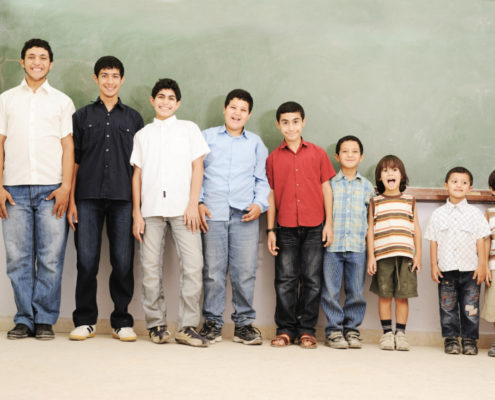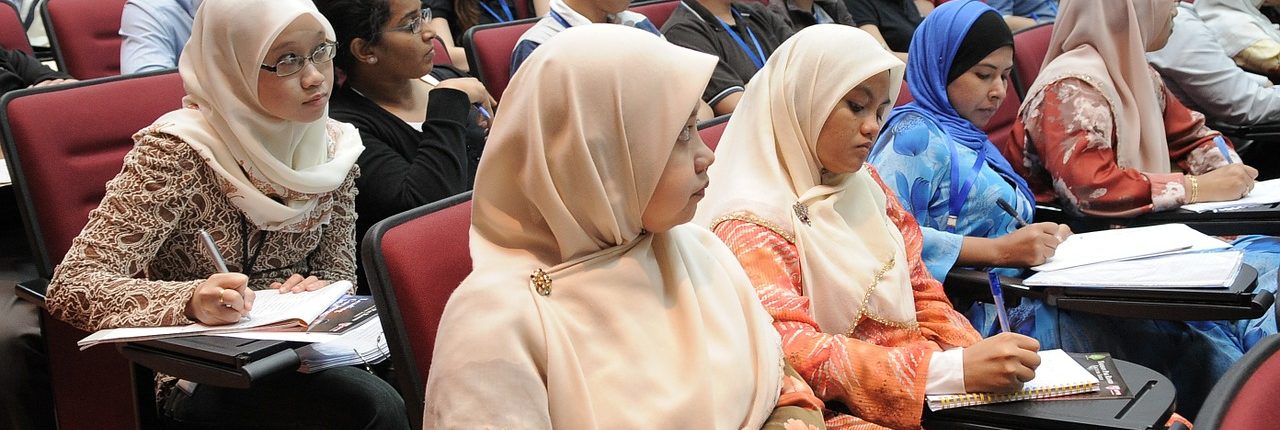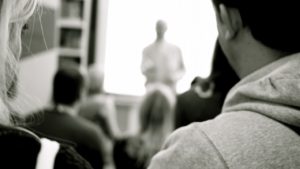Teaching deaf students in the inclusive environment
I stood up in my kindergarten class and began to read from the book, Ballerina Bess, by Dorothy Jane Mills. My teacher looked at me with surprise. She grabbed my hand and ran down the hall with me to read for another teacher. Forty years later I am just now realising why she found my being the first in the class to read so astounding
– Nadene Eisner
Nadene has moderately severe-to-profound hearing loss in both ears, yet her inability to hear did not deter her from her love of reading and learning.
To equip teachers to teach well and adapt to the needs of deaf students, I hope this article provides you with some inspiration on how you can adapt your classroom to support every student.
Deaf students – The mistaken belief of slow-wittedness
Despite incredible technological advances and our perceived open-mindedness toward diversity and acceptance, there remains a lot of misconceptions about deaf people.
On many occasions, deafness is wrongly associated with helplessness or being less competent, which can have a negative impact on a deaf student’s self-esteem. In truth, most deaf children have normal cognitive abilities.
With the help of a supportive and inclusive learning environment, deaf students can and do succeed in school, even completing their PhDs.
Lack of academic success be due, not to the fault of the deaf themselves, but to our failure to stimulate them intellectually during their school years
– Dr Bill Watts.
Education is a powerful tool to help deaf students and hard of hearing pupils break down institutional barriers and build self-confidence.
Challenges experienced at school
There are many challenges and difficulties around teaching deaf students. This might be due to an absence of interaction and effective communication among deaf students and their peers, or in some cases between deaf children and their hearing parents.
The biggest problems deaf and hard of hearing students experience in class are:
- Hearing what goes on in the lectures and seminars.
- On-site captioning and subtitling services are not always provided.
- Insufficient breaks from lip reading.
- Split focus, when more than one person is speaking.
- Trouble remembering and recalling information.
- Burn-out from constant stress and working too hard.
- Hard of hearing students do not feel a sense of belonging in the class during the lesson.
Deaf students are not simply students who cannot hear; they are students with specific academic needs, who have different strengths than their hearing peers.
Being deaf does not only involve the loss of hearing but includes the limitation of their ability to acquire language and speech naturally and spontaneously.
Studies have shown that deaf students generally have less confidence and positive ideas about themselves than hearing students do. The delayed language development experienced by most children with hearing loss results in limited opportunities for effective education.
The ideal teaching environment for deaf students
There are three main avenues for teaching deaf students:
- A specialised school for the deaf and hard of hearing.
- A “mainstream” school, where deaf students attend school with other hearing children from the same community, but education may or may not support their specific hearing needs.
- Inclusive schools refer to the idea that all students are entitled to an appropriate education in an environment that will provide them with the best opportunity to learn and socialise with their peers.
The latter is the most widely advocated approach and is referred to as inclusive education. Inclusive education encourages deaf and hard of hearing students to participate in communities, cultures and extra curricula activities.
Inclusion considers how a student fits into the school learning community by being included in regular classes from the very start, providing all students with an equal opportunity to learn.
However, this type of schooling does require specialist support, resources and facilities, like interpreters and notetakers.
According to Bailey Plessis (1998), most educationists agree that for inclusive education to work, money, space, planning and a smaller number of students per classroom is essential.
Benefits of an inclusive learning environment for students with a hearing loss
It’s assumed that deaf children can improve their language through adequate exposure and practice. Providing nonverbal strategies and tools for communication in the classroom may improve their development of verbal language skills.
Instead of segregating students with hearing difficulties, education has evolved into special institutions and schools to meet the diverse needs of all students, with the help of specialist teaching.
When provided with an environment rich in language for both hearing students and students with hearing loss, learning together, success is achievable.
Teaching strategies for an inclusive learning environment
An environment sympathetic in acoustic terms
Ambient noise can be very disruptive to hard-of-hearing students. A lot of teaching rooms use air conditioners which make it difficult to hear, plus most classrooms have a lot of hard surfaces, low ceilings and fluorescent lights, which can make tinnitus worse.
Hearing aids will pick up and amplify every detail of sound, so the noisier the environment is, the more difficult it will be for the student to hear the teacher speak.
Keep class and background noise to a minimum. Consider acoustic hushboards for your classroom to reduce background noise by 40%.
Classroom seating
Deaf learners should ideally be seated near the front, slightly to one side of the teacher at an optimum distance for lip-reading (less than 6 feet).
Encourage students to manage their own learning space by adjusting their seating and manoeuvring themselves into a good listening position.
Some students might prefer buddying up to another student who they trust and can help them keep updated on what’s being said and occurring within the class.
Sign language interpreters
It’s important to augment teacher’s speech with sign language for sign language users. Studies have found simultaneous communication beneficial for deaf pupils.
A sign language interpreter is a great addition to the inclusive classroom. They should participate in the life of the classroom, as well as help adapt the curriculum.
Bring copies
Teachers should provide copies of the lesson or lecture notes, with handouts and course content, in advance, including a reference list so that students can go through the material in preparation.
Students who need to wait for information to be transcribed from tapes sometimes have to wait a significant period of time, which could lead to them falling behind.
121 Captions allow deaf students to keep up with lectures by streaming live captions word for word at up to 350 words per minute.
More tips when teaching deaf students:
- Allow students to record lectures.
- Any videos and films used in class, where possible, should be captioned.
- Schools and universities should use notetakers to help deaf students follow instructions.
- Use wall space wisely. Avoid distracting wallpapers and pin boards.
- Consider installing acoustic hushboards to reduce background noise by 40%.
- Ensure your classroom has good lighting, so it’s easier for students to lip read.
- Do not allow more than one person to speak at a time.
- During classroom discussion ask students to speak one at a time.
- Try not to speak when writing on the board. Students won’t be able to lip read when your back is turned to them.
- Provide sufficient breaks. Lip reading and intense concentration on communication can be tiring and can result in difficulty remembering what’s been taught.
Inclusion means participation. When teaching deaf students, include them in the decision-making process and ask for their feedback before implementing new strategies.
Students with hearing issues do have severe challenges in the learning process, but they can be overcome, and certain improvements can solve many if not all the challenges associated with teaching deaf students.
Inclusive education for students with a hearing loss should be a priority and can be accomplished with time and your sincere investment.
Resources
Bailey, J. & Plessis, D. (1998). From them to us. An international study of inclusive education. London, Routledge.
Eisner, N. (2012). Engaging deaf and hard of hearing students in the school library. The University of Illinois at Urban-Champaign.
Leave a Reply
Want to join the discussion?Feel free to contribute!










My son has been mainstreamed since age 3 and doing AMAZING! Bilaterally implanted and age 12. It takes parent involvement as much as teacher involvement.